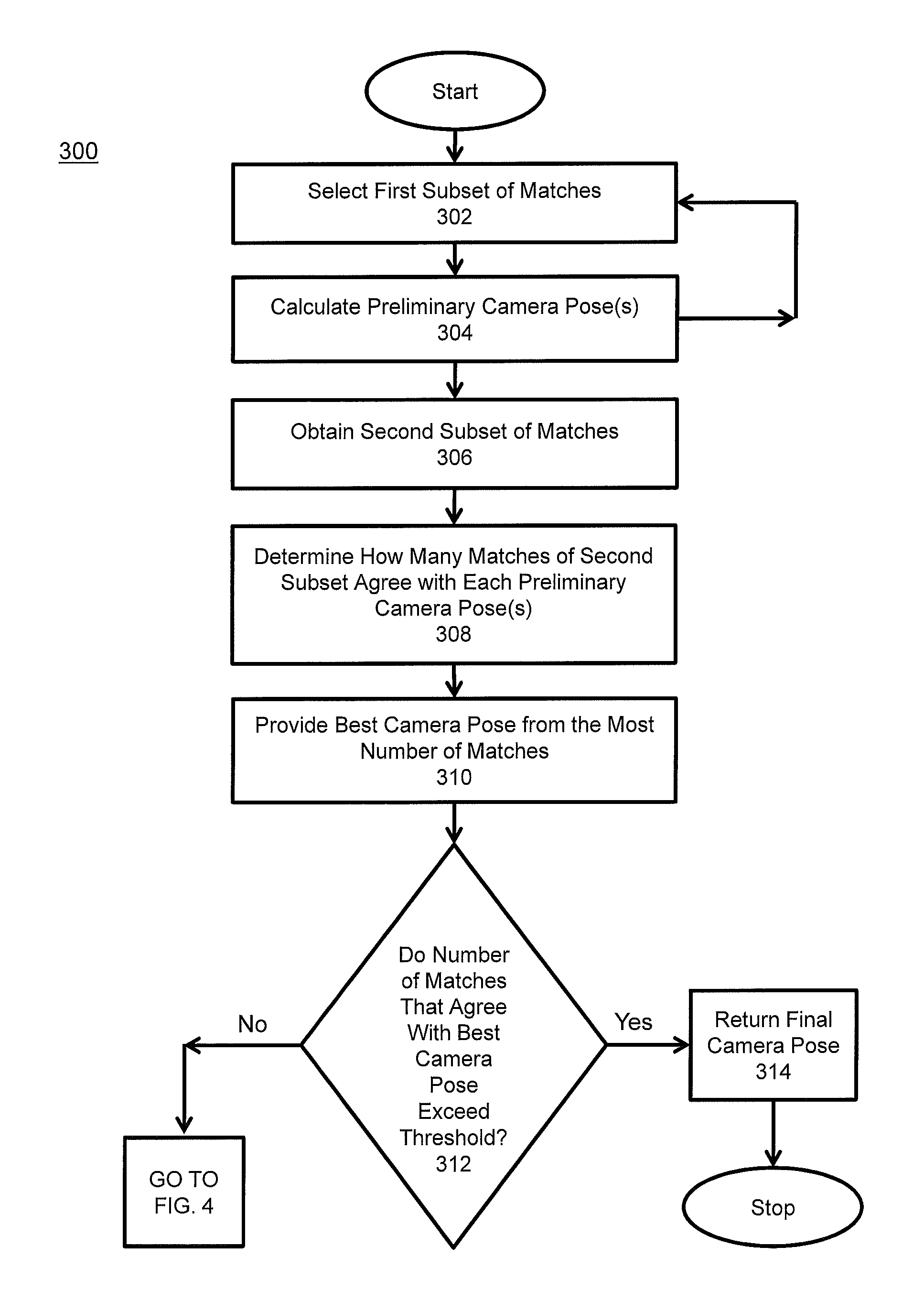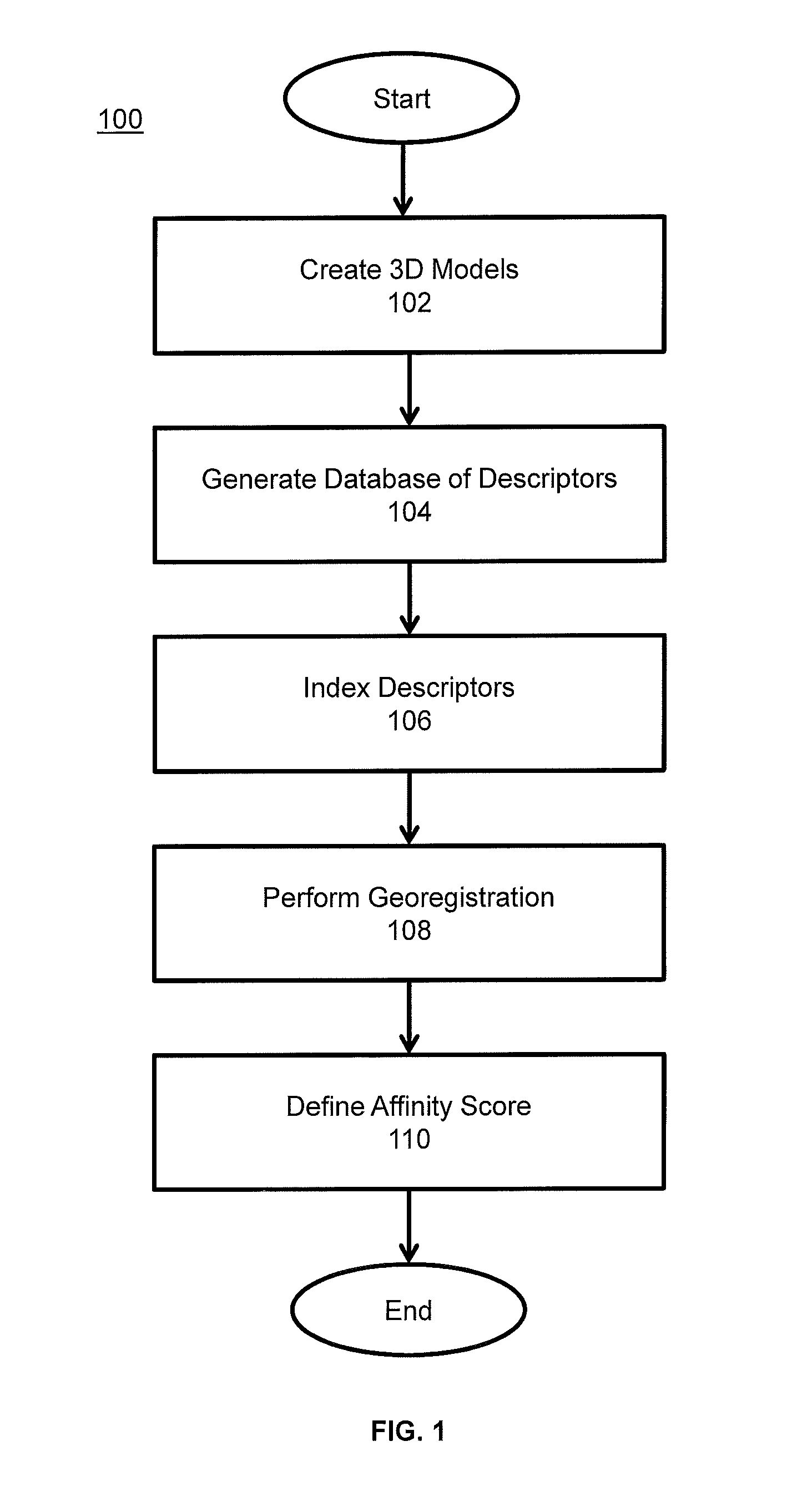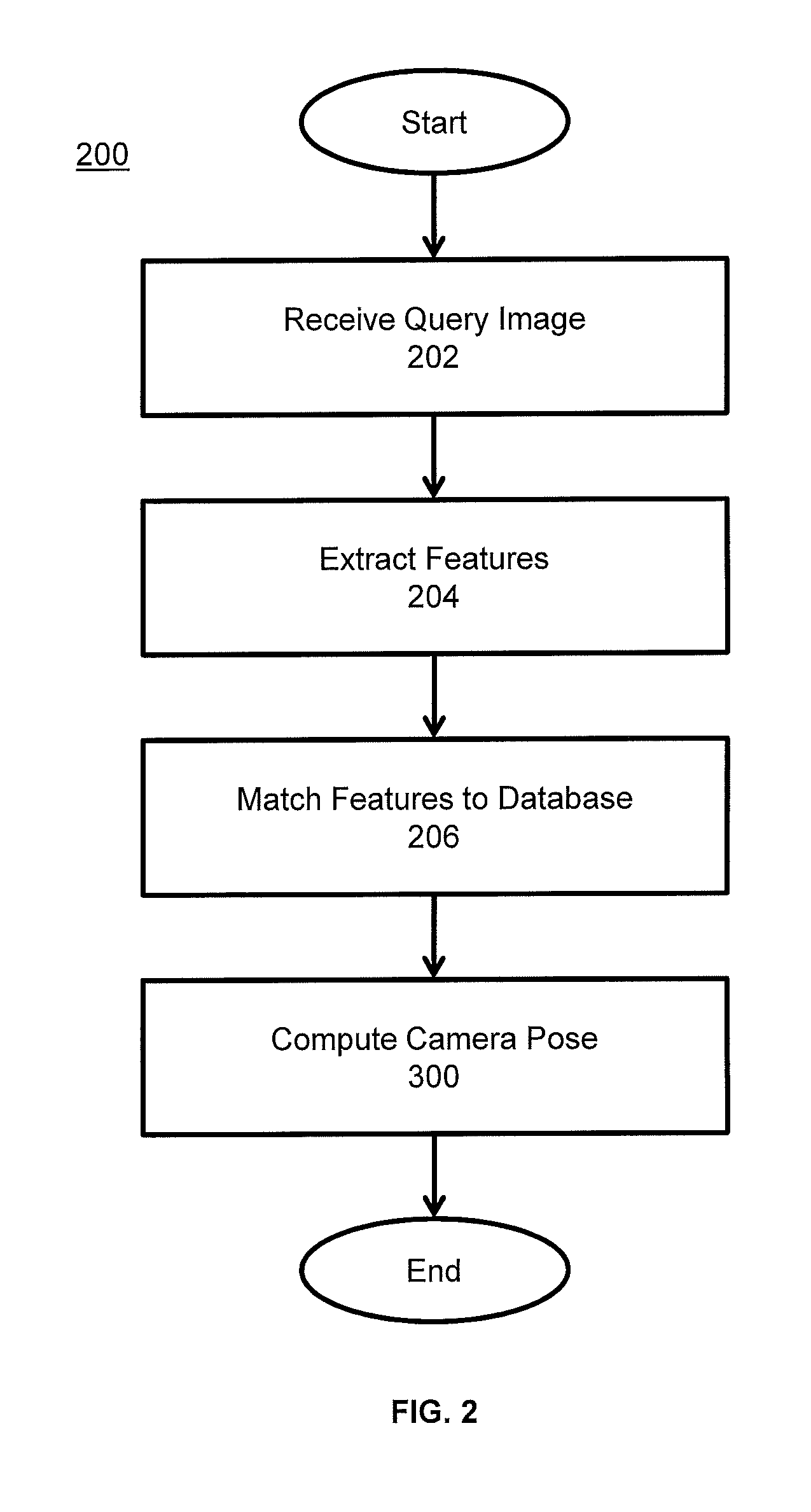System and methods for world-scale camera pose estimation
a world-scale, camera-based technology, applied in the field of computer vision systems, can solve the problems of reducing affecting the accuracy of camera-based pose estimation, and coarse location
- Summary
- Abstract
- Description
- Claims
- Application Information
AI Technical Summary
Benefits of technology
Problems solved by technology
Method used
Image
Examples
Embodiment Construction
[0028]The present invention occurs in two stages: (1) a database construction stage, performed offline, and (2) an image-to-database matching and camera-pose-estimation stage, performed at runtime. The database construction stage results in a database of 3D features and associated feature descriptors.
[0029]Specifically, the database construction stage takes as input a large set of images with “geotags”. “Geotags” are annotations of latitude and longitude. The images are grouped into subsets corresponding to different landmarks, and a database comprised of one or more points (referred to as points in the database or database points)—such as 3D points—is constructed along with one or more associated feature descriptors for each point in the database.
[0030]The database is used in the image-to-database matching and camera-pose-estimation stage to provide the location or orientation in the world for an input image. Specifically, a query image is matched to the database and the camera pos...
PUM
 Login to View More
Login to View More Abstract
Description
Claims
Application Information
 Login to View More
Login to View More - R&D
- Intellectual Property
- Life Sciences
- Materials
- Tech Scout
- Unparalleled Data Quality
- Higher Quality Content
- 60% Fewer Hallucinations
Browse by: Latest US Patents, China's latest patents, Technical Efficacy Thesaurus, Application Domain, Technology Topic, Popular Technical Reports.
© 2025 PatSnap. All rights reserved.Legal|Privacy policy|Modern Slavery Act Transparency Statement|Sitemap|About US| Contact US: help@patsnap.com



